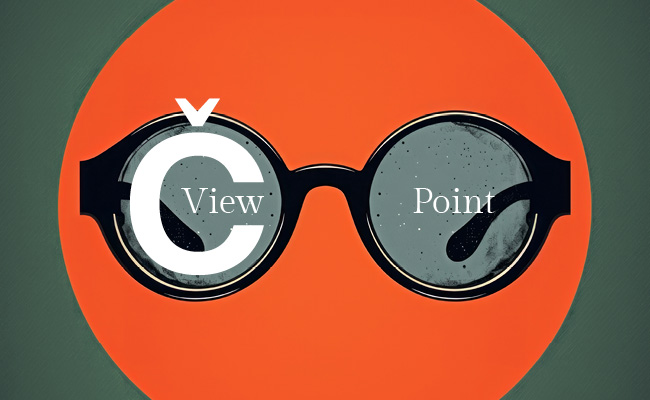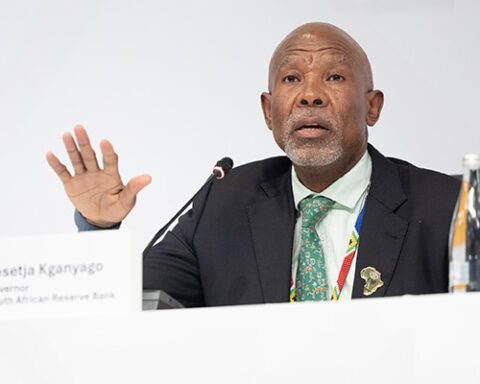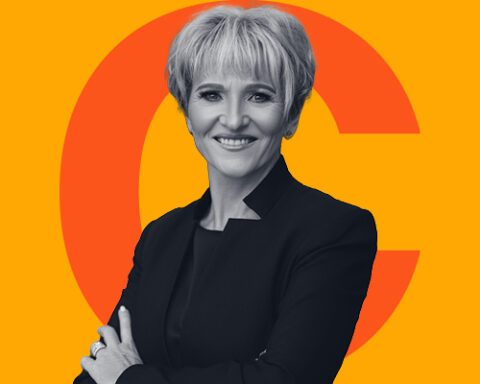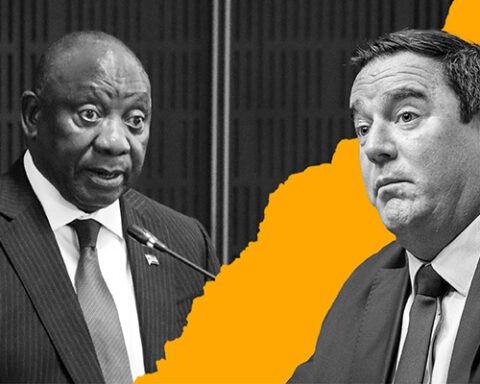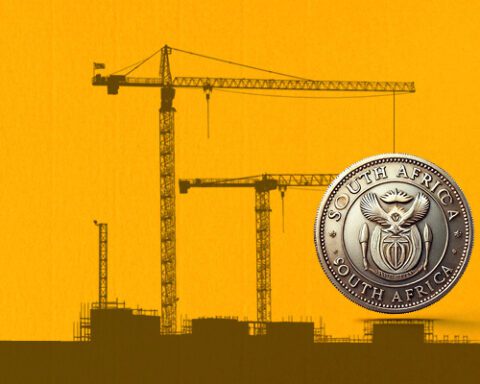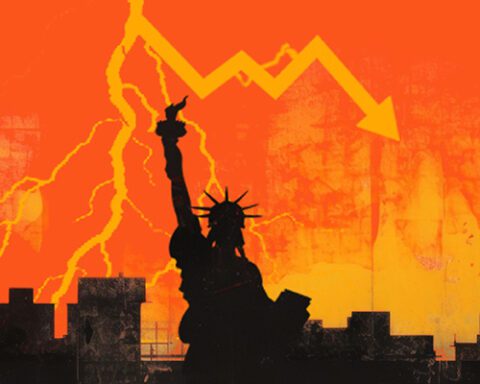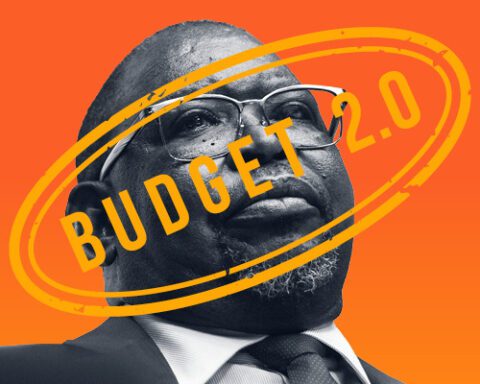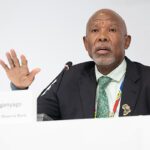The rand, which has already strengthened to its strongest level in 18 months, could gain more ground – provided the government can sustain the message to investors that it has the right formula to boost growth and curtail spending.
South African bonds stand to make further advances too, based on continued optimism that the government of national unity, formed in July, will stay the course on market reforms championed by President Cyril Ramaphosa. Economic growth was just 0.6% last year, but Ramaphosa hopes this can rise to 3% next year.
The rand has rallied based on optimism that interest rate cuts by the US central bank, the Federal Reserve, will boost demand for emerging-market assets. A slowdown in inflation has also pushed bond yields down, driving prices higher due to the inverse relationship between yields and prices.
The National Treasury has also pledged to stabilise debt, which is projected to hit 65% of GDP by 2026.
“We’re constructive about the currency and bonds, and it’s partly because we think fundamentals are still improving, and that’s partly a response to the political change,” says Elna Moolman, Standard Bank’s head of macroeconomic research. “The rand and bonds have already appreciated materially. We don’t rule out further gains, but it depends on both domestic and global fundamentals and sentiment.”
For some perspective, consider yields on 10-year government bonds. Just before the May 29 elections, when there was speculation the ANC would form a coalition with anti-business parties like the EFF or Jacob Zuma’s uMkhonto weSizwe Party, the yield spiked to nearly 11.2%. Just this week, it hit 8.8%.
Analysts predicting great things for South African bonds and the currency will be more cautious given the steep appreciation already since the unity government was formed. The rand, for instance, has risen nearly 10% from R19.20/$ to R17.30/$ now.
Tempered optimism
Moolman argues that longer-dated bonds – those maturing in 10 years or more – are likely the best bet. These bonds still reflect some investor scepticism about the government’s debt management and the country’s growth outlook, which means their yields are trading at a level that adds an additional premium because of those risks.
“When I speak to investors, there are still concerns about the fiscal picture. They’re very optimistic about the political change and what it can mean,” she says, “but there are still concerns.”
First, many of them are not “entirely convinced growth will sustainably lift enough to significantly reduce the country’s fiscal risks and ensure debt stabilisation”, Moolman says. This is compounded by the high rate of unemployment, sitting at 33.5%, which implies greater government spending on social grants. Another concern, she says, is that South Africa’s ailing state-owned entities will need further bailouts.
So what could be the spark for a further rally?
Much depends on the picture to be painted of the country’s fiscal outlook by finance minister Enoch Godongwana, who will deliver the medium-term budget policy statement in the next few weeks. Moolman believes that might be too soon and investors need more time.
Standard Bank, for one, is holding out that the coalition government is going to deliver, even if others, like the International Monetary Fund – which projects growth of 1% this year and 1.3% next year – are less optimistic. “If we’re right that we’re going to see very pragmatic fiscal policy and a very strong commitment to, firstly, debt stabilisation, and maybe ultimately a bit of an improvement in the debt trajectory, then I think that the longer end can see a bit of a decline in yields,” she says.
Q&A with Standard Bank’s Elna Moolman
Was the Reserve Bank too conservative by cutting interest rates by just 25 basis points (bp) last month?
There was scope for it to prudently do more. The inflation picture is very benign. But there are two arguments in [the SARB’s] favour that I think explain its 25bp rather than 50bp cut. First, it’s likely going to be a very shallow cycle and therefore quite short. So, whether we do two 50bp cuts or four 25bp cuts, we’ll be done by early next year. And from a real-economy perspective, that difference is quite small.
Second, I think the SARB is, to some extent, still concerned about some of the inflation risks. This includes the two-pot retirement reforms that were implemented in September – in some scenarios, it could lift inflation by up to 0.3 of a percentage point.
What are the risks to the inflation outlook?
There are a couple of risks, and [public sector] wages is one of them, though we shouldn’t underestimate how far Treasury has gone in terms of reducing the wage bill trajectory relative to what it would’ve been a few years ago.
The other risk would be our assumption that we’re going to see enough growth reforms to give us 2% plus growth on a sustained basis – that’s a critical assumption in our expectation for debt stabilisation.
Can the inflation target be lowered?
As much as the SARB would like to see a lower inflation target, it will target whatever it’s mandated to do, so I still think for now the focus is on 3%-6% with a focus on the midpoint of that range. I’m not convinced that the target will be changed in the short term.
If I put myself in Treasury’s shoes, I’d rather prioritise the fiscal battles: achieving debt stabilisation, containing wages and social spending, and limiting state-owned entities’ support. Once that is cemented, then I would focus on a lower inflation target.
Top image: Collage. Rawpixel/Currency
